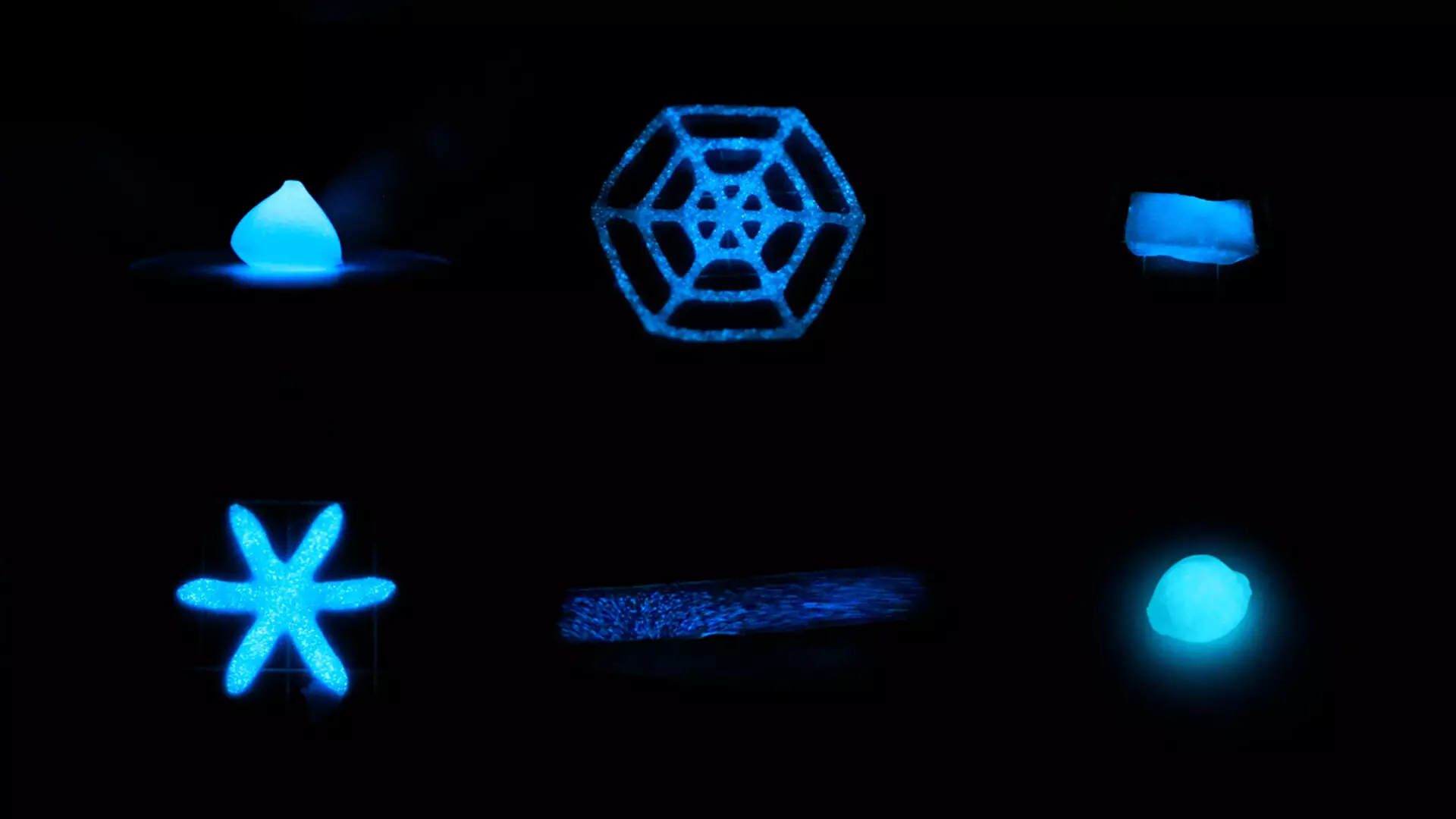In a groundbreaking study, researchers from the University of California San Diego have developed soft and durable materials that have the extraordinary ability to glow when subjected to mechanical stress. Inspired by the mesmerizing bioluminescent waves observed during red tide events at San Diego’s beaches, this study brings forth new possibilities in the field of materials science. These luminescent materials are derived from single-celled algae called dinoflagellates, offering a unique way to convert mechanical stimuli into light emission. With their simplicity and potential for diverse applications, these materials hold immense promise for the future.
The core ingredients of these bioluminescent materials are dinoflagellates and a seaweed-based polymer known as alginate. By combining these elements, the researchers created a solution that was then processed using a 3D printer to form various shapes, such as grids, spirals, spiderwebs, balls, blocks, and pyramid-like structures. After the printing stage, the materials underwent a final curing process. Remarkably, when the materials experienced compression, stretching, or twisting, the embedded dinoflagellates responded by emitting light. This fascinating phenomenon mirrors the behavior of dinoflagellates in the ocean, where they produce flashes of light as a defense mechanism against predators.
To ensure the durability of these materials under different experimental conditions, the researchers incorporated additional components. A second polymer called poly(ethylene glycol) diacrylate was added to reinforce the materials, enabling them to withstand substantial mechanical loads. Additionally, coating the materials with a stretchy rubber-like polymer called Ecoflex provided protection from acidic and basic solutions. With this enhanced resilience, the materials could maintain their form and luminescent properties even when immersed in seawater for up to five months.
One of the notable features of these materials is their minimal maintenance requirements. Just like in their natural environment, the dinoflagellates within the materials require cycles of light and darkness to sustain their luminescence. During the light phase, the dinoflagellates photosynthesize and generate food and energy, which are then utilized in the dark phase to emit light when subjected to mechanical stress. This intricate interplay between living organisms and non-living components allows for self-sustainability and responsiveness to fundamental mechanical stimuli, closely resembling the bioluminescence observed during red tide events in the ocean.
The implications of this research are vast, with potential applications ranging from mechanical sensors to soft robotics and biomedical devices. The ability of these materials to sense pressure, strain, or stress opens avenues for advancements in various industries. Light signals emitted by the materials can be utilized in treatment procedures or controlled drug release within biomedical devices. However, before these applications can be fully realized, further research and optimization are still necessary.
The development of soft and durable materials that glow in response to mechanical stress signifies a significant milestone in materials science. By harnessing the power of nature and leveraging the luminescent properties of dinoflagellates, researchers have unlocked new possibilities for materials that can convert mechanical stimuli into light emission. The simplicity and versatility of these materials provide hope for advancements in mechanical sensing, soft robotics, and biomedical devices. As further improvements are made and optimization continues, we move one step closer to a future where materials seamlessly integrate living organisms and non-living components to create innovative solutions.



Leave a Reply